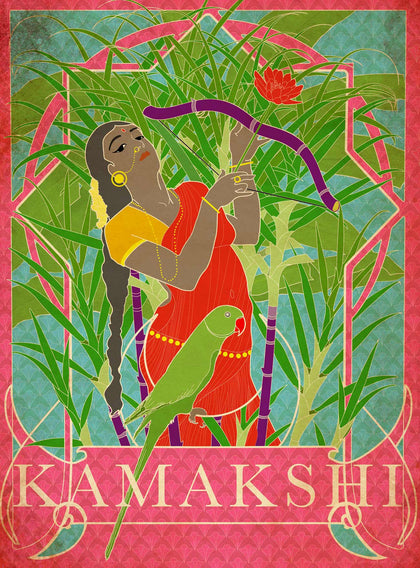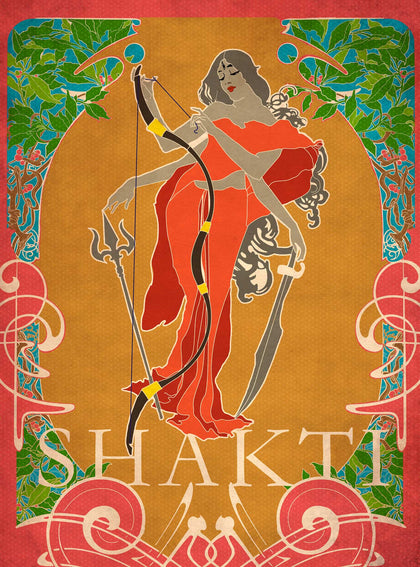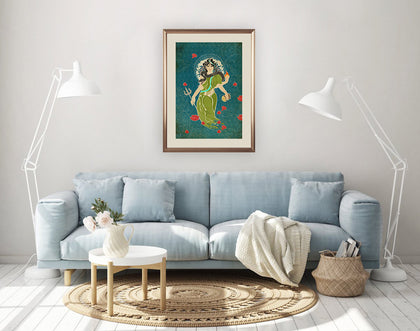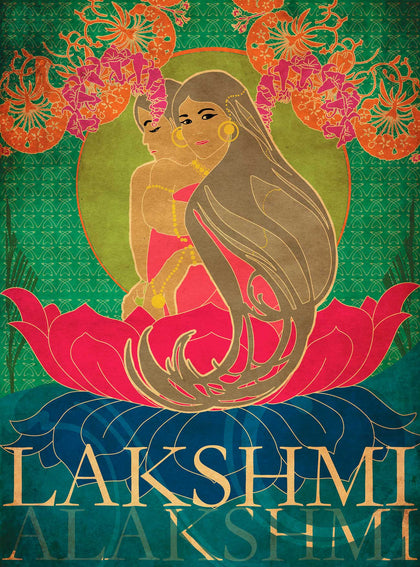Description
The fifth day of the festival of lights is dedicated to a pair of twins. The male half of the twins is Yama - known as the king of righteousness but more famously as the god of death. The female half of this duo is Yamuna - the river goddess. A goddess with a certain kindness and willingness to be able to take in the pain and sorrow of others. She is referred to as the goddesses of tenderness, love and passion, and her life was made up of a series of momentous gestures.
In her calm and meandering course we hear stories that occurred within her - the birth of Vyasa (the author of the Mahabharat), the childhood of Krishna and Radha, of her consorts Shiva and Vishnu and so many more, as mortals and immortals crossed paths mixing the divine with the human. Watching complex and strange lives playout, as they josseled, pivoted by curses and boons, Yamuna tenderly held us in a stillness within her moving waters.
Siblings are intertwined in inexplicable ways, for all who pray and dip in her waters, wash away the fear of her brother - the god of death. A boon and power given to her by him. So, on that fifth day of Deepavali, siblings come together to worship and have their relationship blessed and to show gratitude for each other. For, on this day the twins come together to bless all who do the same.
Born into an illustrious family (her father the Sun god and her mother the goddess of clouds), she is known for ignoring the narrow furrows of rules and decorum with a casual disregard, being led by love and at times passion.
A grieving Shiva, had appeared with a dark and heavy sadness, having lost his wife Sati. Taking his pain into herself, she turned into a deep and dark blue - a unique color for rivers on the Gangetic plains.
Did rivers have meaning in themselves or were the stories that flowed within them that brought meaning? Yamuna’s story is an old one, that flows through us, washing away all the fear and pain, we seem to hold so close.
About the Series:
This artwork is part of the “Sister Misfortune” series, through which the artist, Smruthi Gargi Eswar, narrates lesser-known stories from Indian mythology, while reflecting on the narrative surrounding women in our culture. Various Indian goddesses (devis) are depicted with a refreshing artistic lens.
In India, there is a constant burden on women to be “Devi-like”. Through this series, the artist attempts a reverse deification of the goddesses, making them appear like real women, in a real world. The series is an exploration not just of duality, but of multiplicity. It compels us to question our attitudes - women towards themselves, men towards women. How does the idea of a goddess coexist within every woman? How do we, as a society, so casually dismiss, disrespect, disregard, and defile in our everyday existence, those who we have bedecked with gold and enshrined in a temple?























































































 View Full Screen
View Full Screen































































